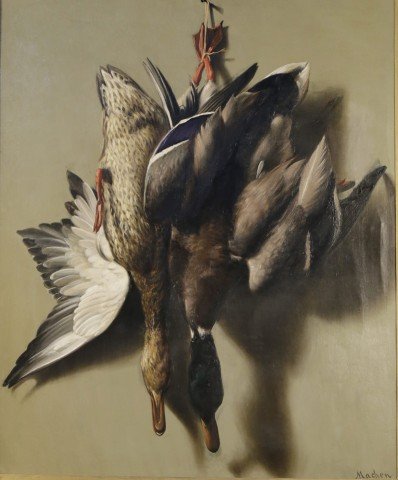A Dutch-born painter, William Machen did portraits, landscapes, historical scenes and still lifes. He emigrated from Holland to the United States in 1847, and in the 1880s was in Michigan where he taught art at Detroit College and and Sacred Heart Convent at Grosse Point, Michigan. For nearly thirty years, he worked in Toledo and "may have been the most prolific artist in Ohio's history." (Haverstock)
Essentially self-taught, he began winning silver medals at the Ohio State Fair in 1852 for his fruit, flower, and wild-game pictures; by the time he died, in Washington, D.C., his studio account-books recorded more than three thousand oils and water colors sold.
He exhibited his work at the Pennsylvania Academy, the 1876 Centennial Exposition in Phildadelphia, the Detroit Artists Association, and the Detroit Museum of Art. In 1865, he was a finalist in a design for a monument to the recently-assassinated President Abraham Lincoln.
Sources:
Peter Hastings Falk, Who Was Who in American Art
Mary S. Haverstock. Timeline, by the Ohio Historical Society, March - June 2003. (Submitted by Edward Bentley, Art Researcher from Lansing, Michigan)

